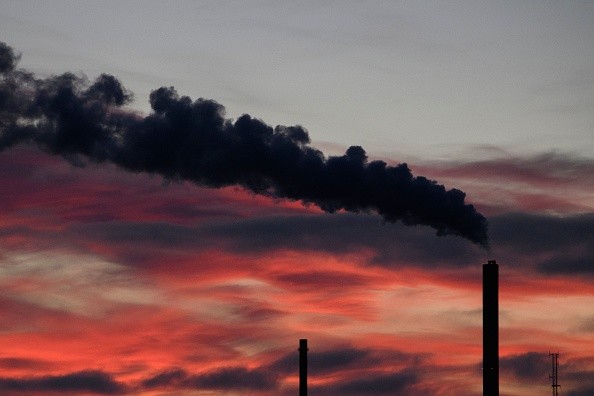The bottom of deep-sea trenches accumulates disproportionately large amounts of carbon, according to recent research. Thus, the trenches might be crucial for the deep-sea storage of organic material and consequently for the atmospheric CO2 balance.
 (Photo : OLIVIER MORIN/AFP via Getty Images)
(Photo : OLIVIER MORIN/AFP via Getty Images)

Some of the least explored places on Earth are the deep sea trenches because they are so difficult to access, so dark, and have such high pressure, as per ScienceDaily.
It is therefore challenging to gather samples and perform accurate measurements of the processes that control the turnover of organic material in the deep.
However, in recent years, researchers from the University of Southern Denmark's Danish Center for Hadal Research (HADAL) have made a number of expeditions to deep-water trenches.
They have created and used sophisticated underwater robots, and they have shown in a number of studies that have been published that steep deep-sea trenches collect a variety of material, including organic carbon, that settles to the bottom of the trenches.
As a result, the bottom of a deep-sea trench can be a veritable hotspot for the deposition of microbial life that transforms the material.
According to three recent studies, the bottom of the trenches accumulates in significant amounts of hard-to-decompose organic carbon, including so-called black carbon. You can find the studies here, here, and here.
Particles created during the burning of fossil fuels, wood, and forests-activities that also result in the release of CO2-are referred to as black carbon.
Thus, the presence of black carbon is a sign of extensive fossil fuel burning. As they are transported by wind and weather to ice-covered areas, such as polar regions, where they settle on ice and snow, increasing heat absorption and causing melting, the particles themselves can also contribute to global warming.
More specifically, the research team estimated that the hadal deep-sea, which is the region of the seabed that is located at a depth of more than six kilometers, stores between 500,000 and 1,500,000 tonnes of black carbon annually.
In contrast, the annual emissions of black carbon from the burning of fossil fuels range between 6,600,000 and 7,200,000 tonnes.
The researchers' calculations are based on sediment samples that they have taken from numerous deep-water trenches that are more than six kilometers deep and therefore a part of the hadal realm. 1% of the seafloor is made up of the hadal zone.
Black carbon is not the only resilient, difficult-to-decompose carbon that is being deposited in the deep in disproportionately large amounts.
However, the black carbon may be a result of the burning of fossil fuels in close-by nations like Chile, New Zealand, and Australia, which sends black carbon into the ocean with the wind.
This theory is supported by the observation that the concentration of black carbon is highest in trenches close to industrialized nations, whereas the concentration of black carbon is lowest in trenches close to less industrialized nations, such as Papua New Guinea.
However, variables like the direction of the wind, ocean currents, and forest fires could confuse these relationships.
Read more: Air Pollution Due to Fossil Fuel Combustion Caused Over a Million Deaths in 2017
Combustion's effects on the environment
Simply put, combustion is a carefully regulated explosion produced for a particular purpose, as per Engineering News.
However, if it is not properly monitored, it could be dangerous, just like any other explosion.
The energy produced and the temperatures above the ignition temperature should be closely monitored because they should be effective for impact.
In order to evaluate the overall safety performance of a chemical process and particular hazardous substance handling operations, risk analysis is a crucial management tool.
Combustion has a number of negative effects on the environment, including those brought on by gas leaks, oil spills, noise pollution, and air pollution.
Pollution from carbon monoxide is another side effect of incomplete hydrocarbon combustion. Carbon monoxide is an odorless, colorless gas that can be dangerous to both people and the environment.
Burning hydrocarbons always produces carbon dioxide.
It is a major contributor to both the acidification of the oceans and global climate change.
Although the greenhouse gas carbon dioxide keeps us warm, too much of a good thing could lead to global warming.
Related article: New Study: Pollution from Combustion of Fossil Fuel is More Dangerous Than Previously Imagined
© 2024 NatureWorldNews.com All rights reserved. Do not reproduce without permission.




![Roundworms with Short Memories 'Stop Forgetting' When Frozen or Given Lithium [Study]](https://1471793142.rsc.cdn77.org/data/thumbs/full/70295/280/157/50/40/roundworms-with-short-memories-stop-forgetting-when-frozen-or-given-lithium-study.jpg)
